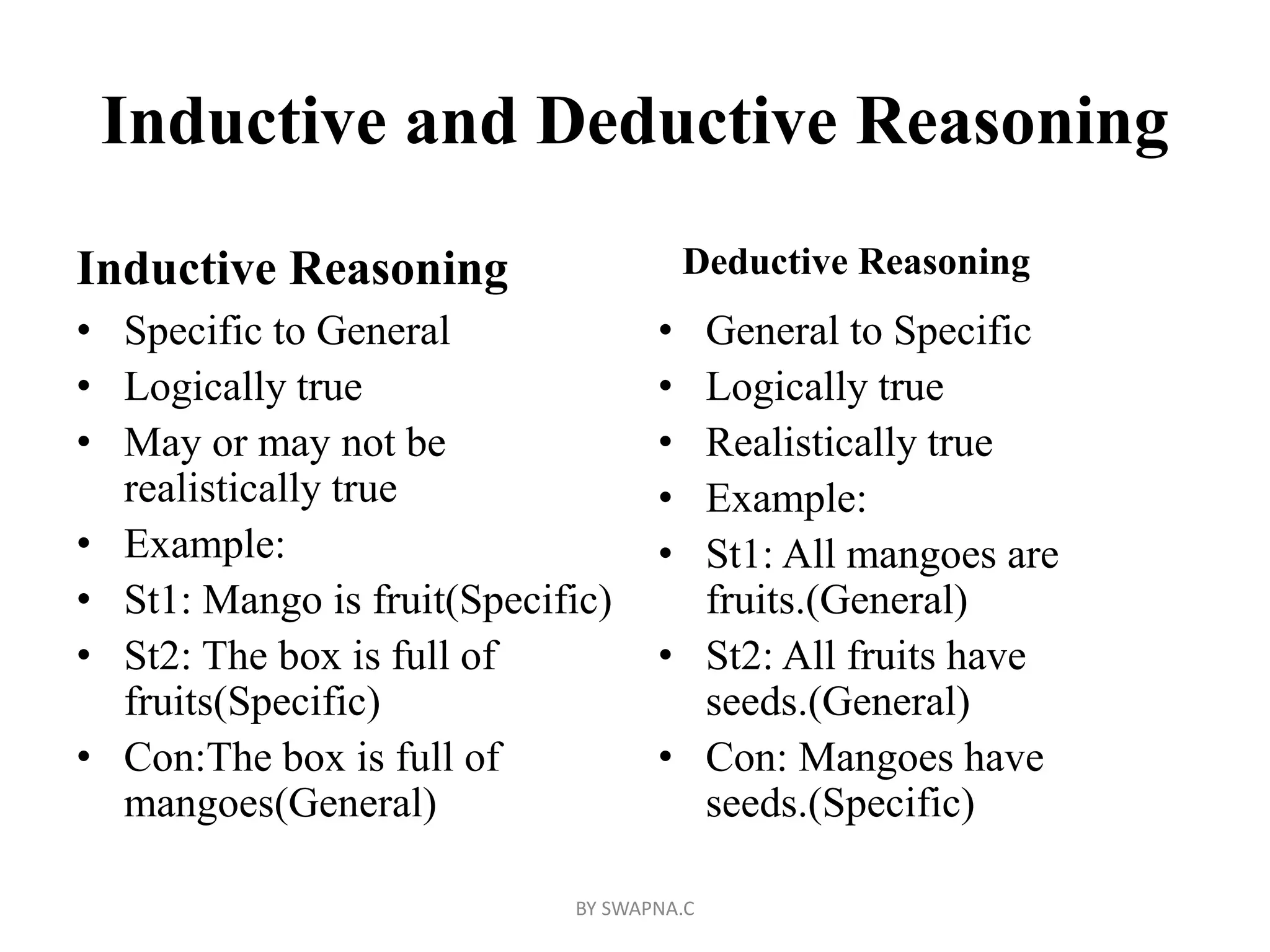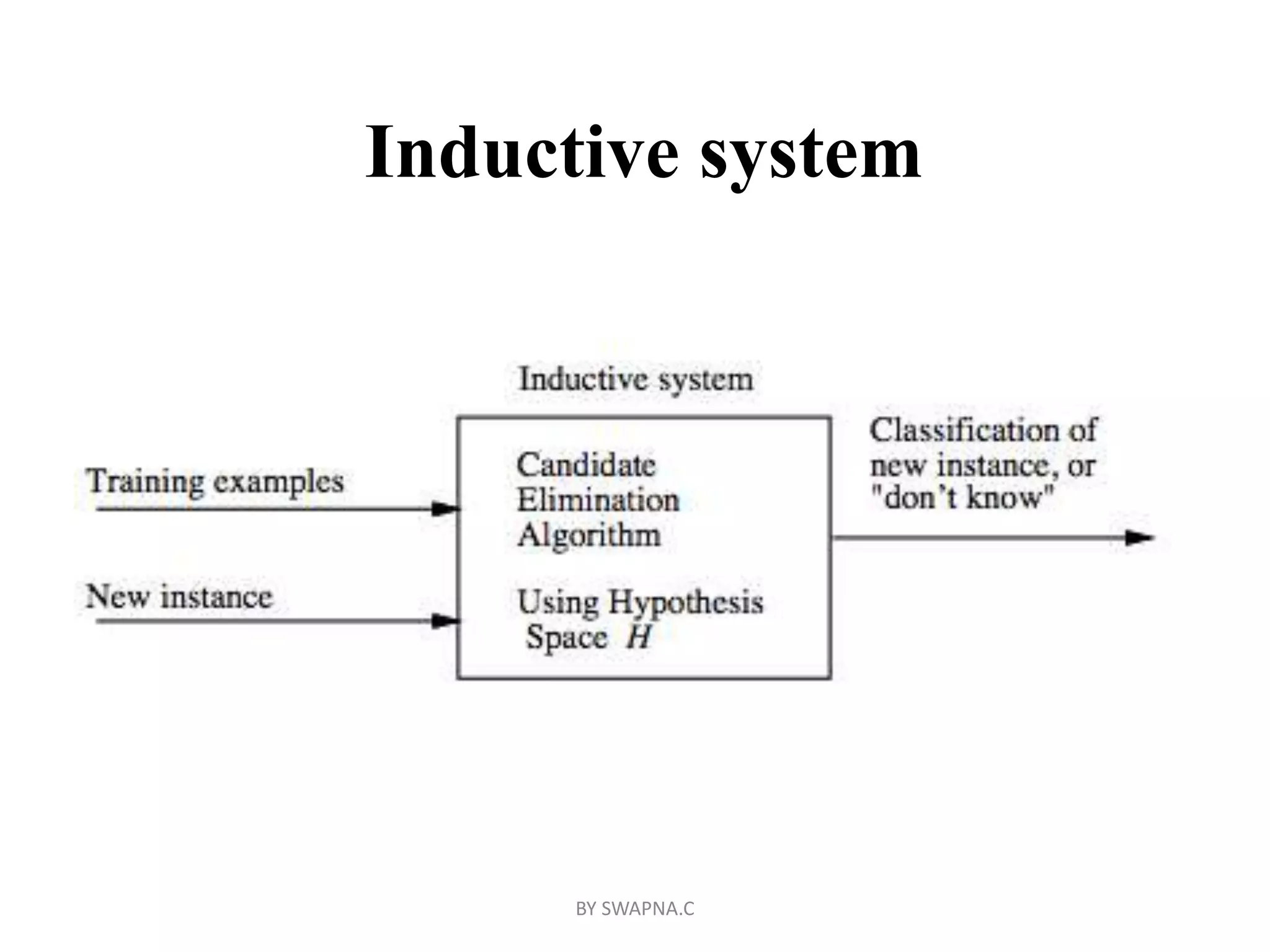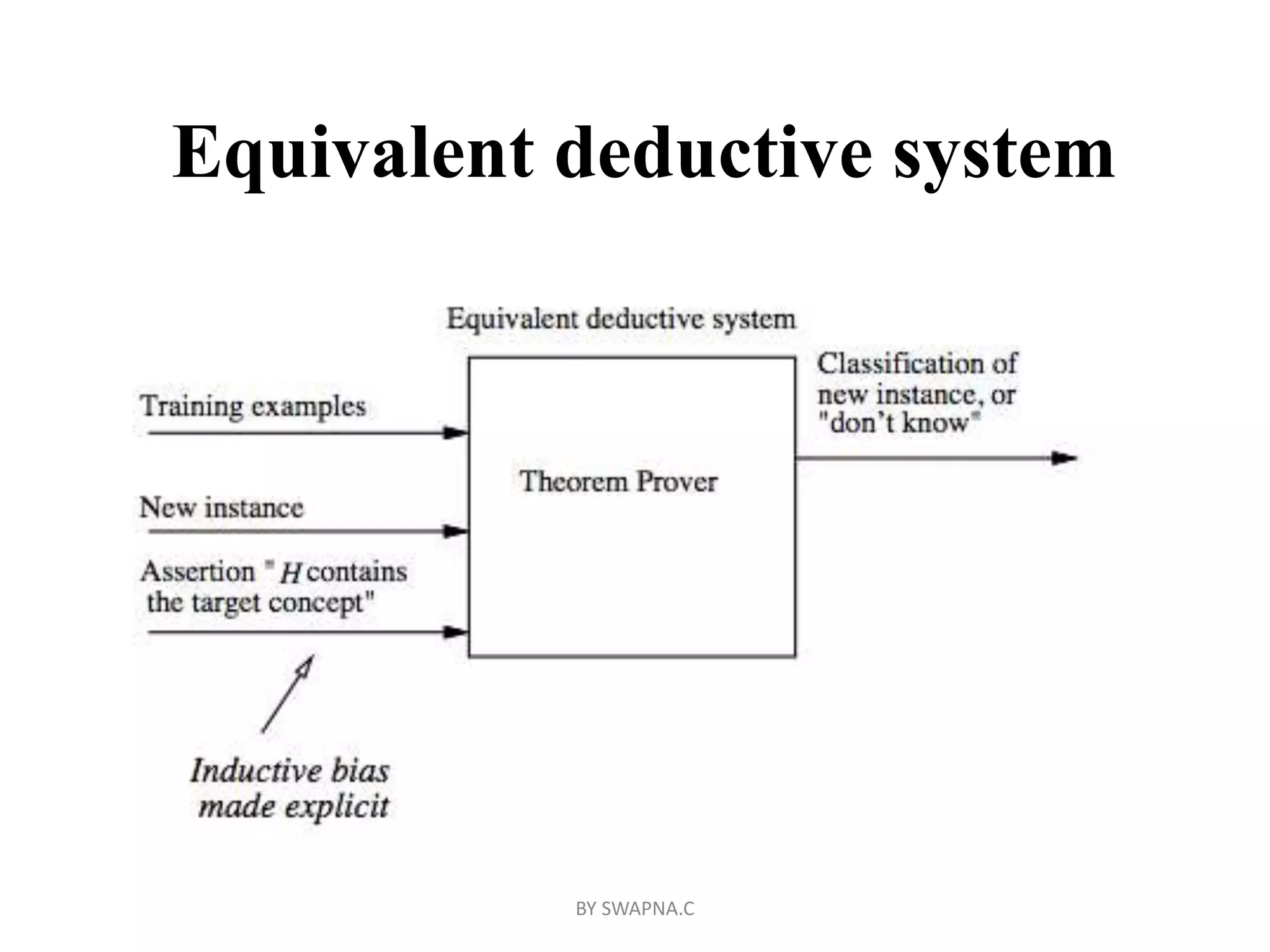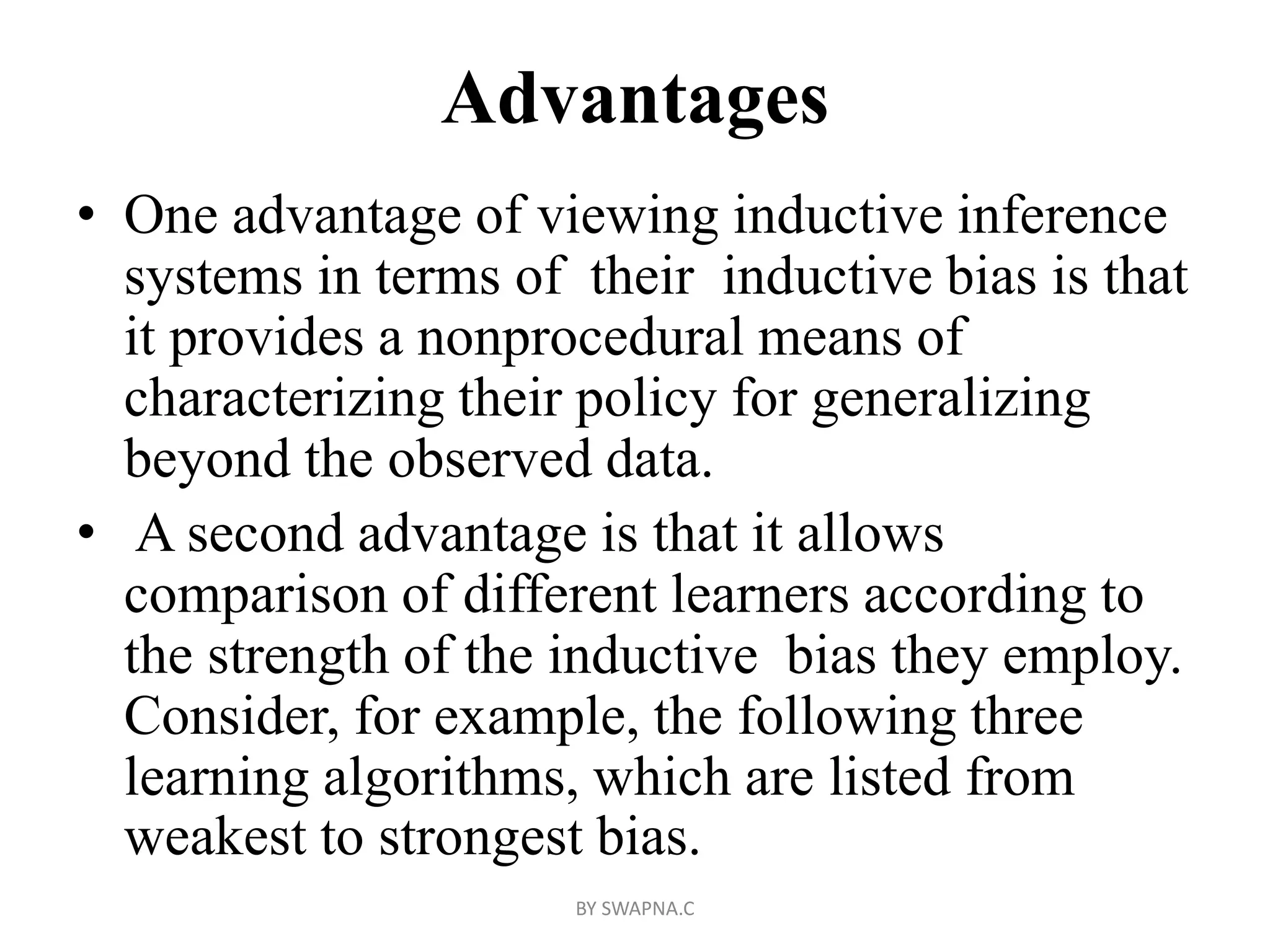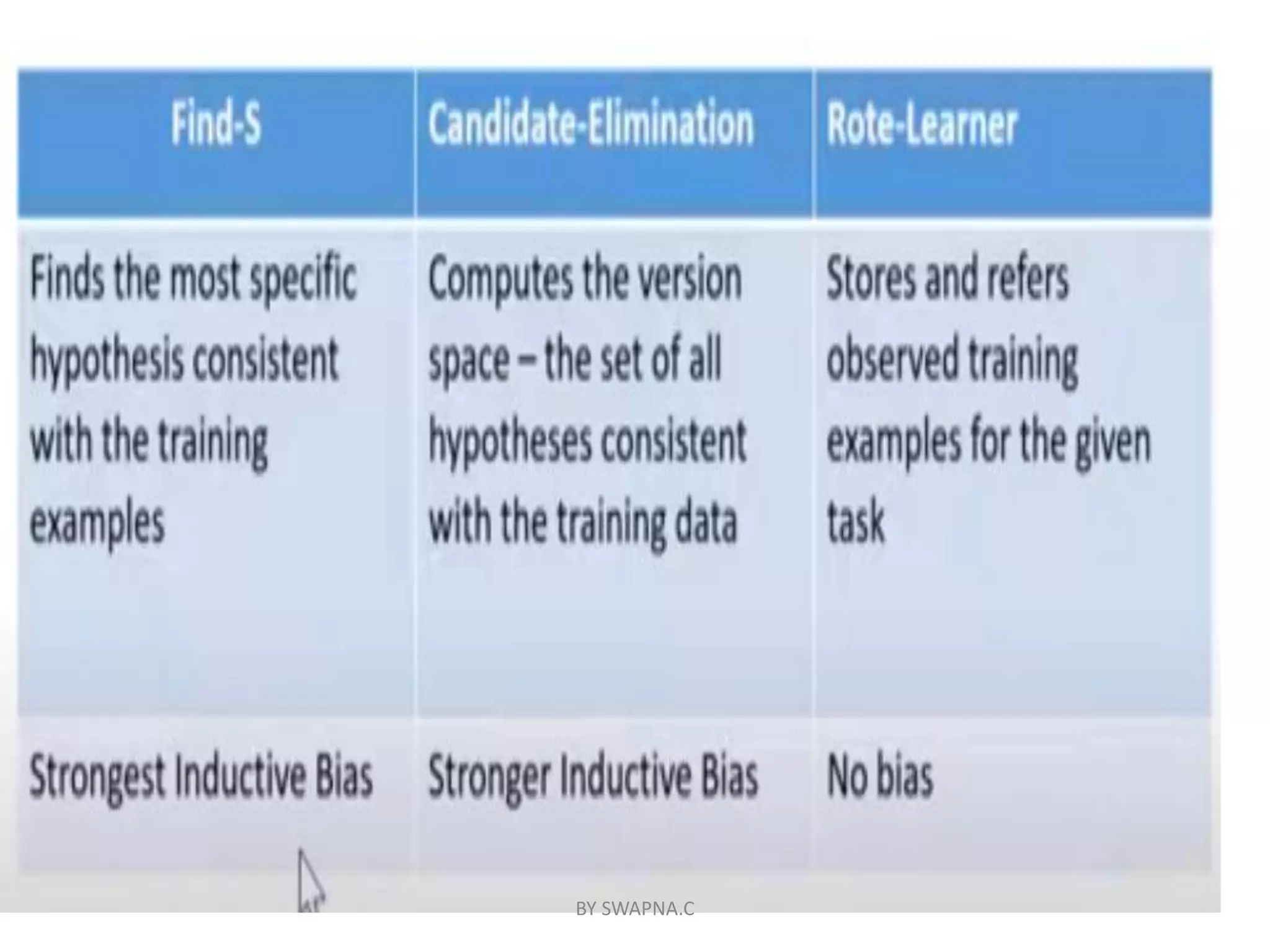This document discusses inductive bias in machine learning. It defines inductive bias as the assumptions that allow an inductive learning system to generalize beyond its training data. Without some biases, a learning system cannot rationally classify new examples. The document compares different learning algorithms based on the strength of their inductive biases, from weak biases like rote learning to stronger biases like preferring more specific hypotheses. It argues that all inductive learning systems require some inductive biases to generalize at all.
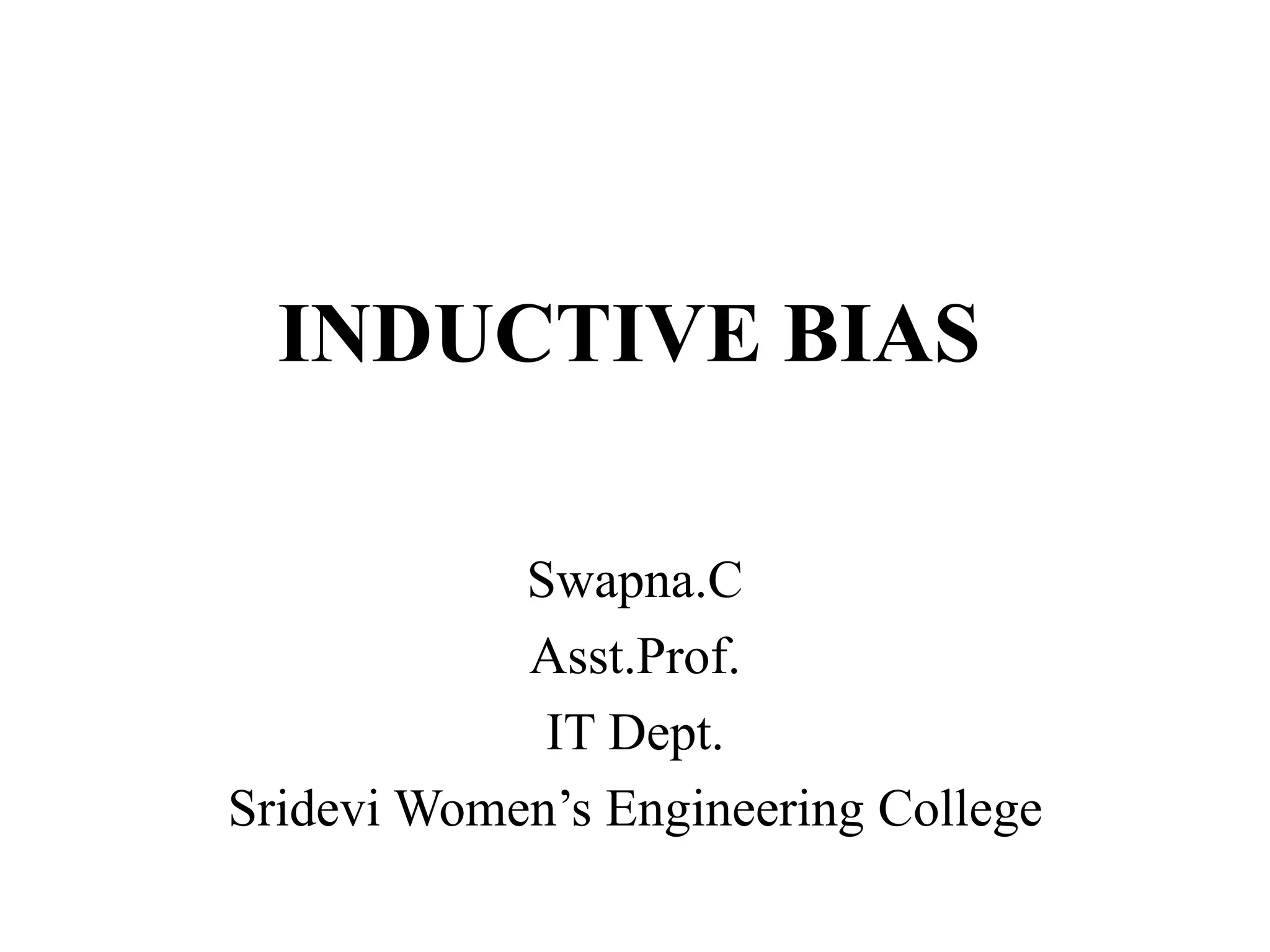

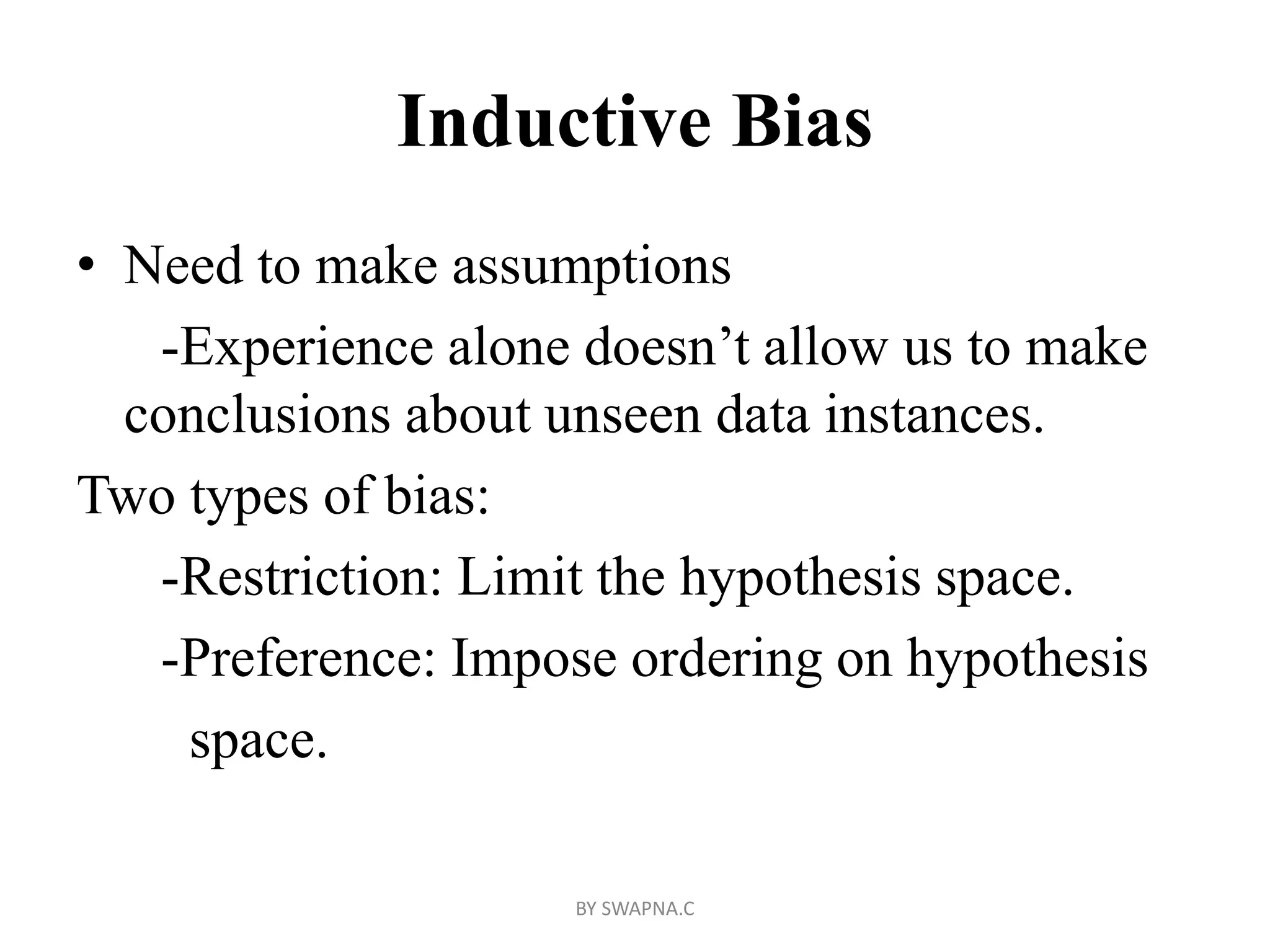
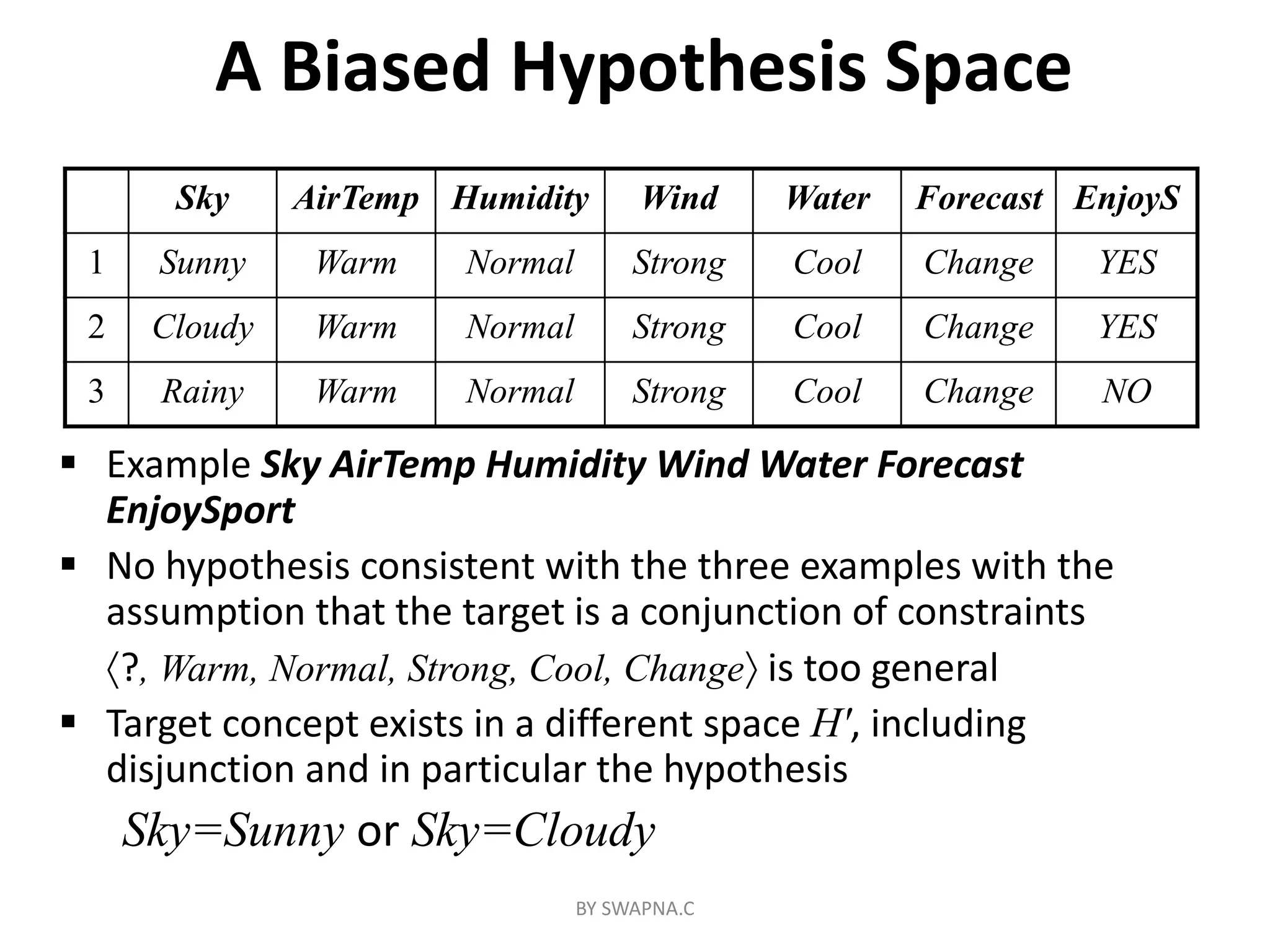
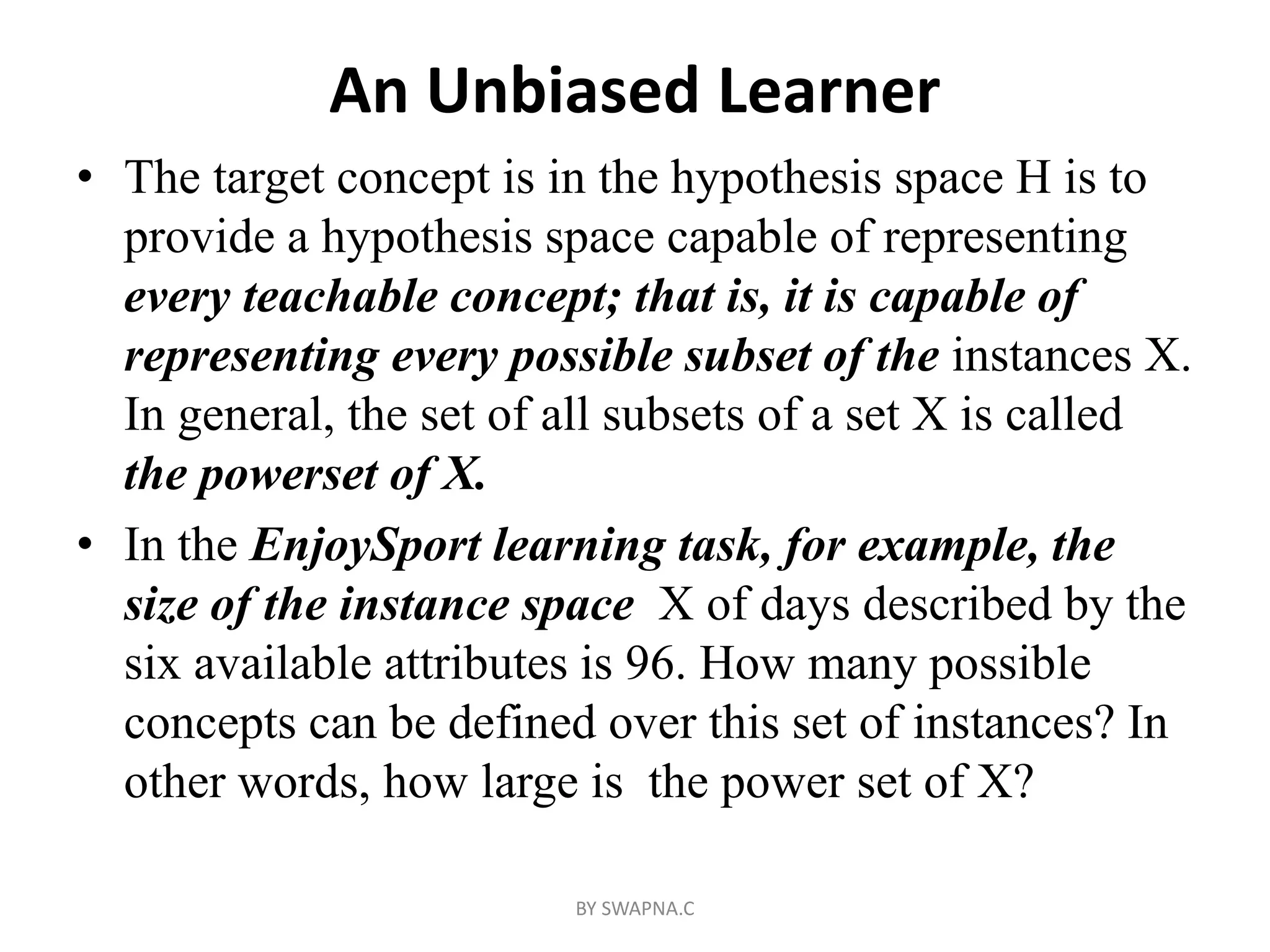
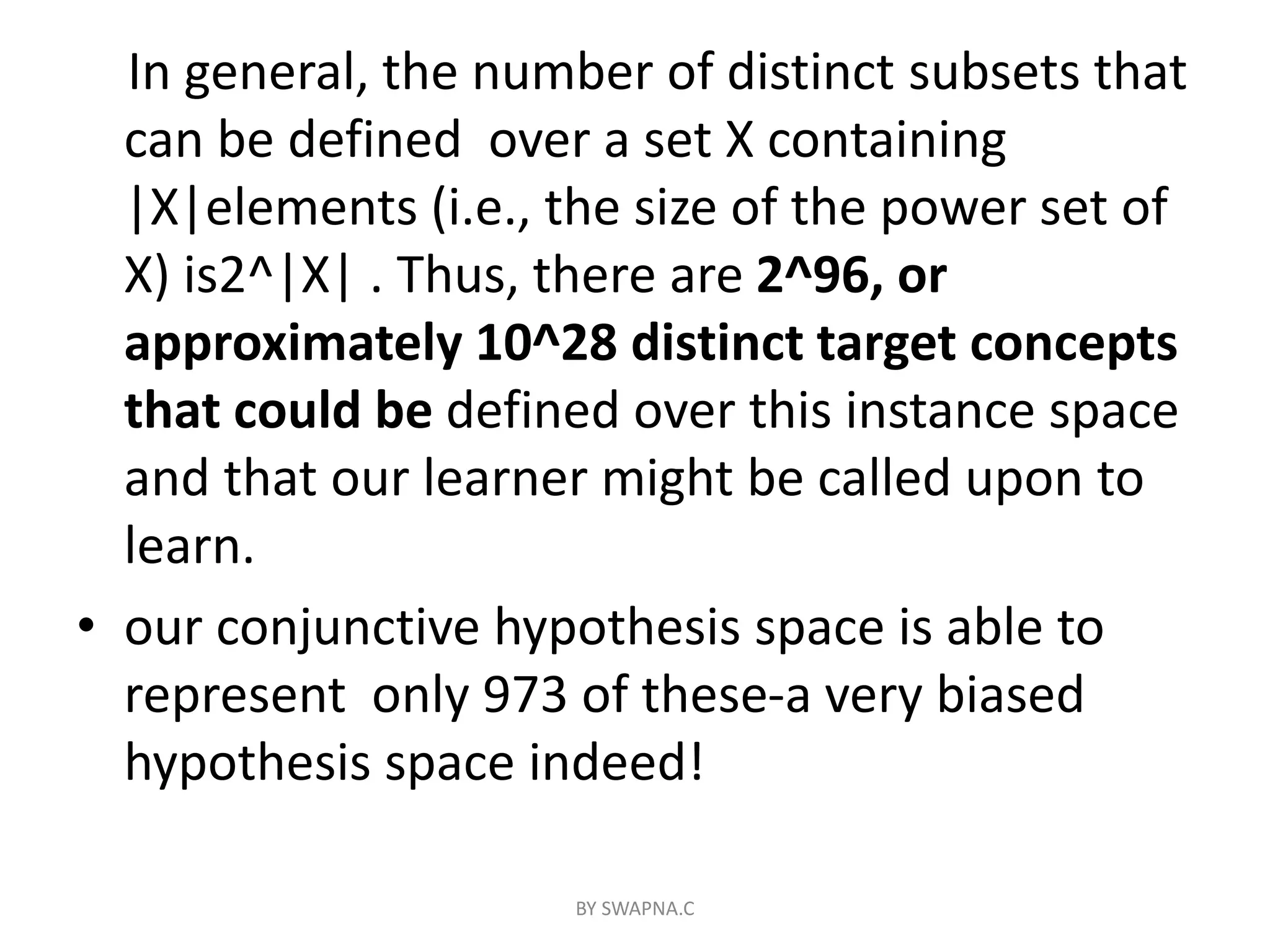
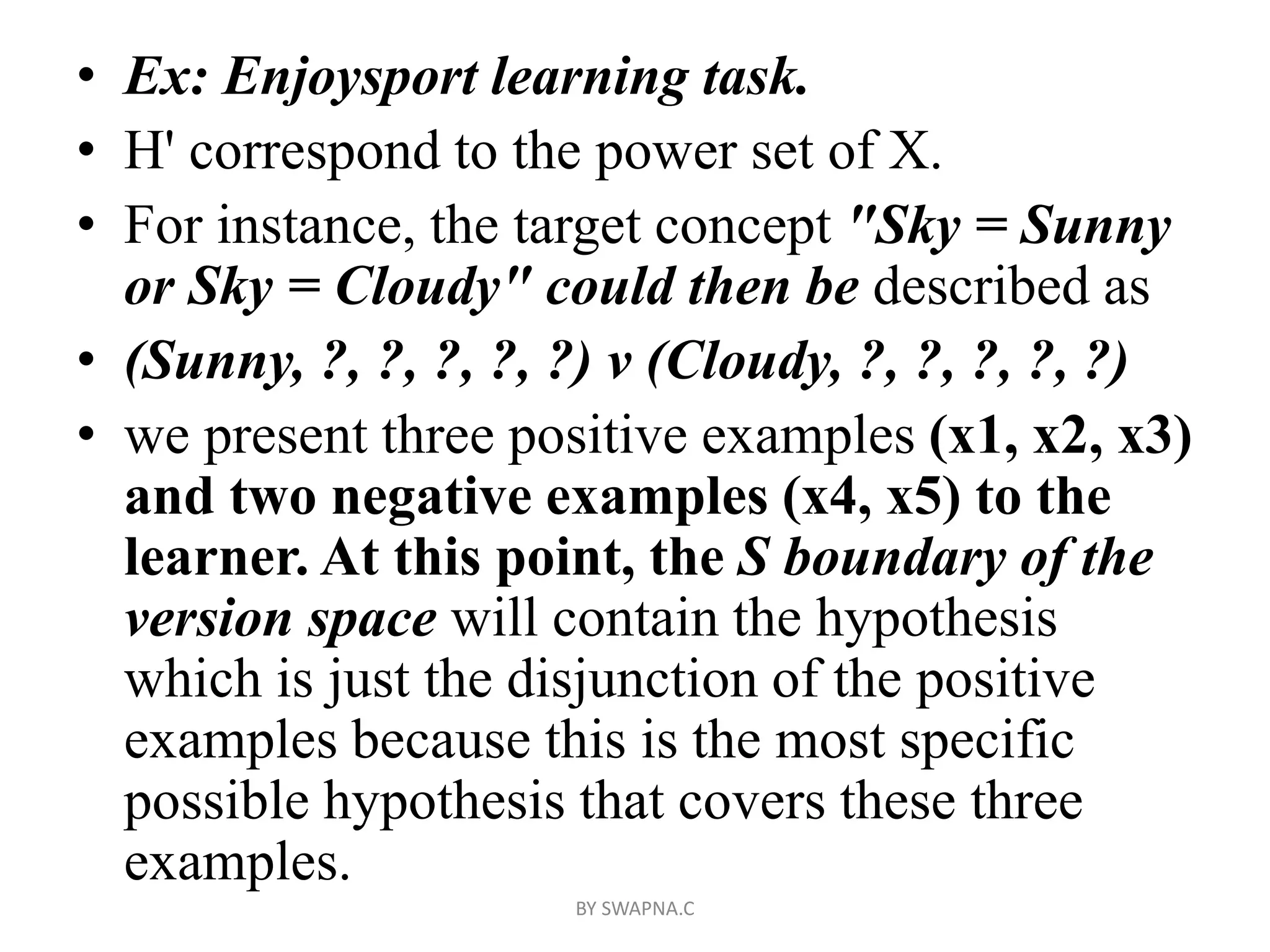
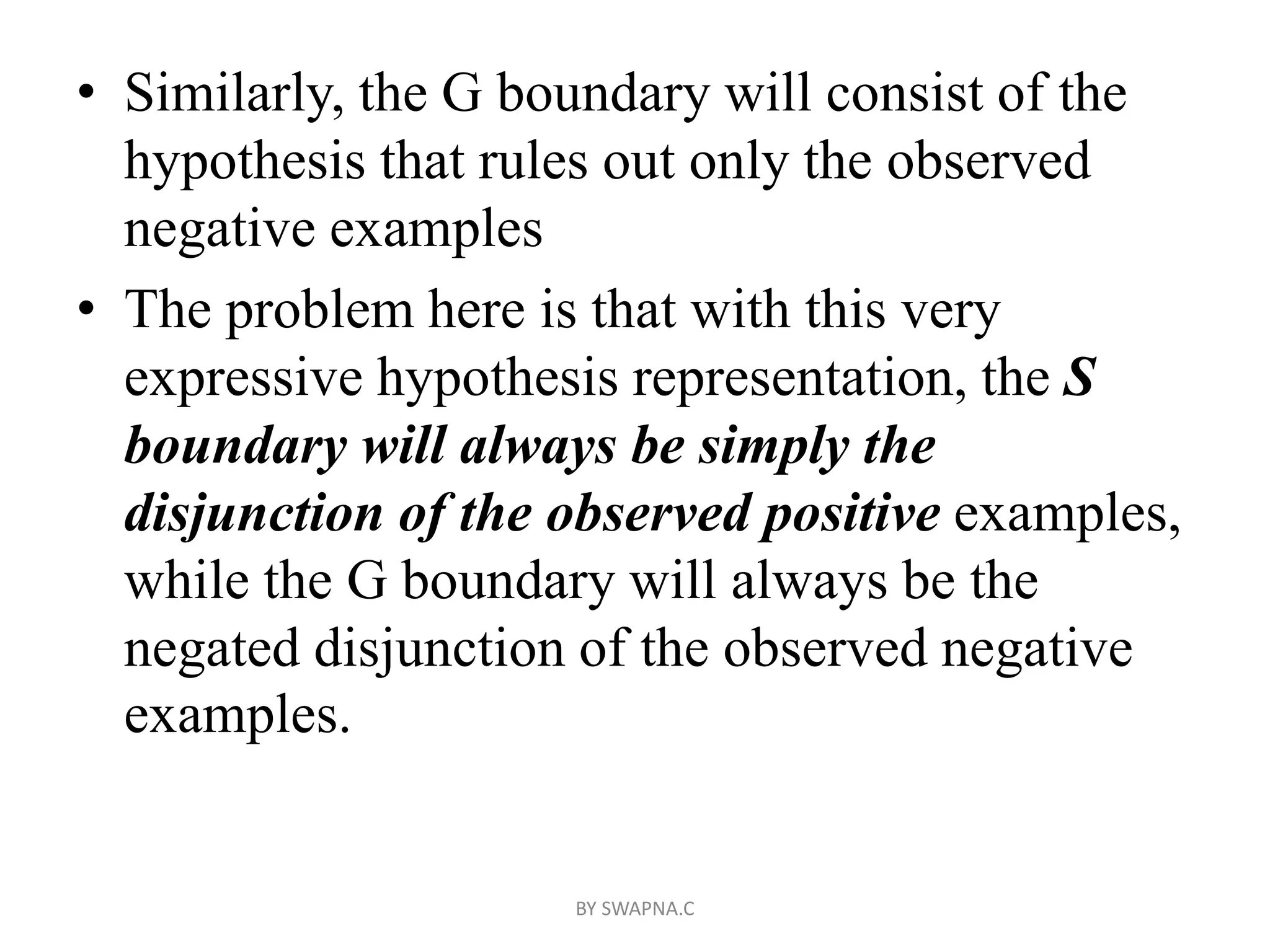


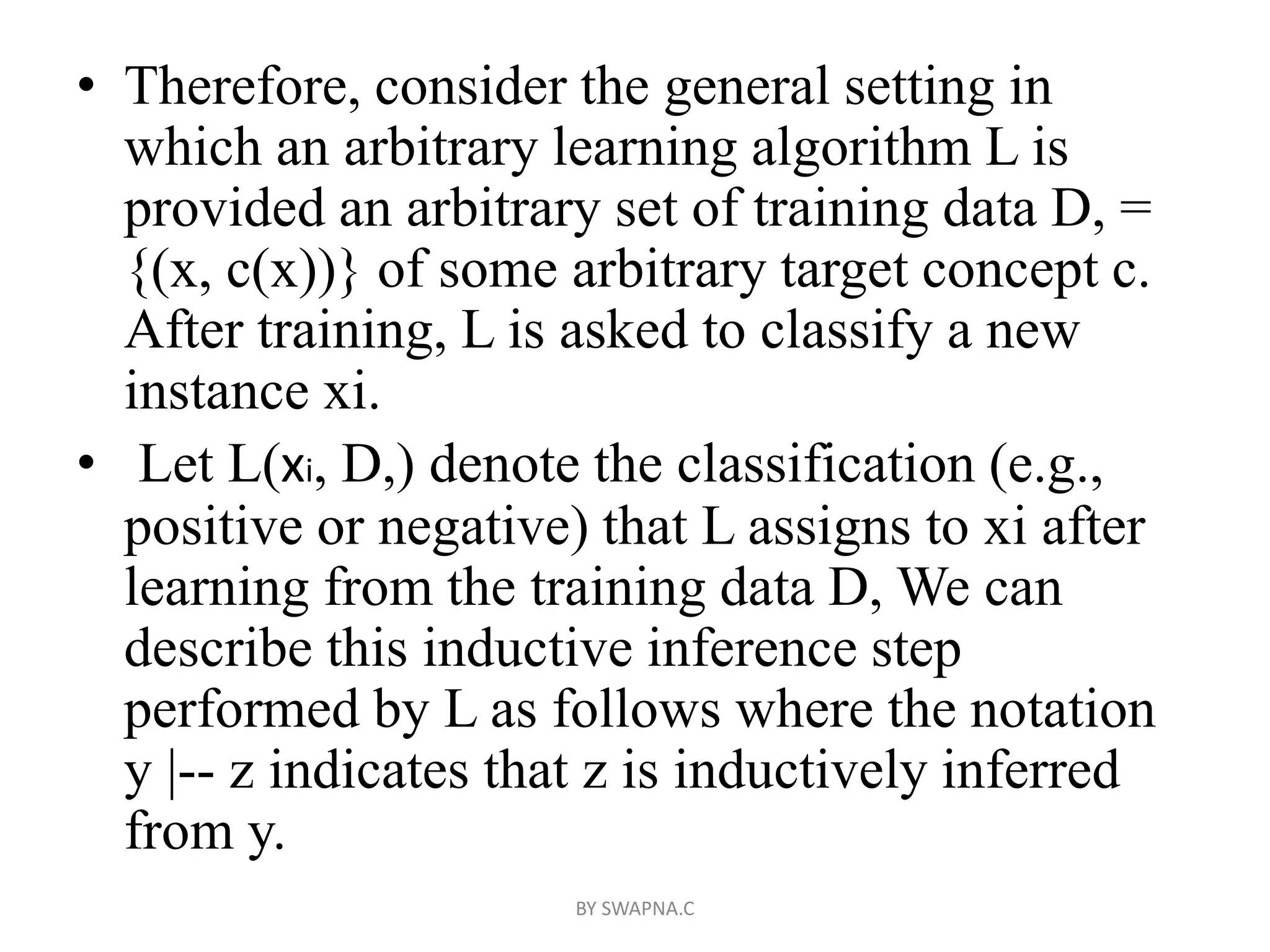

![Inductive bias: definition
• Given:
– a concept learning algorithm L for a set of instances X
– a concept c defined over X
– a set of training examples for c: Dc = {x, c(x)}
– L(xi, Dc) outcome of classification of xi after learning
• Inductive inference ( ≻ ):
Dc xi ≻ L(xi, Dc)
• The inductive bias is defined as a minimal set of assumptions
B, such that (|− for deduction)
(xi X) [ (B Dc xi) |− L(xi, Dc) ]
BY SWAPNA.C](https://image.slidesharecdn.com/inductivebias-210329082211/75/Inductive-bias-13-2048.jpg)
